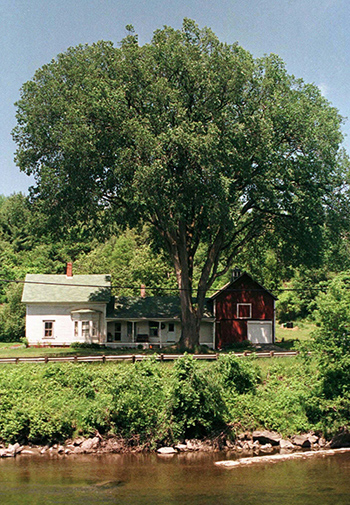Dutch Elm Disease
Oct 27 1931: Killer Fungus Causes Nightmare on Elm Street
By : Randy Alfred, 27 Oct 2009, Wired.com
 1931:Arborists discover a new outbreak of Dutch elm disease in New Jersey, New York and Connecticut. It’s an early marker of a decades-long scourge that will kill millions of trees and denude the parks and tree-lined streets of many North American cities.
1931:Arborists discover a new outbreak of Dutch elm disease in New Jersey, New York and Connecticut. It’s an early marker of a decades-long scourge that will kill millions of trees and denude the parks and tree-lined streets of many North American cities.
Dutch elm disease is a fungal infection that’s carried from tree to tree by bark beetles, or sometimes directly through the merged root systems of two or more adjacent trees. It rots the wood and causes leaves to yellow and wilt.
As a tree fights the infection, internal scar tissue eventually overwhelms the tree’s ability to transport water and nutrients through its trunk and branches. Before long, the tree will die.
Native to Asia, the blight was first observed in Europe around 1910. Dutch biologist Beatrice Schwarz isolated the pathogen and described it in her doctoral dissertation in 1921.
Thus, the name: It’s a Dutch-discovered disease of many kinds of elms, not a disease that strikes only the Dutch elm.
The Netherlands, however, had heavily relied on plantings of a particularly vulnerable variety of Dutch elm. Rigorous control measures were undertaken. Inspectors marked infected trees throughout the nation. Owners had to to remove and destroy the bark of any infected tree, or to submerge its dead trunk for three months. Meanwhile, the nation embarked on a program of breeding and planting resistant varieties of elm. Still, the losses there were staggering: The Dutch lost about half their elms in 20 years.
